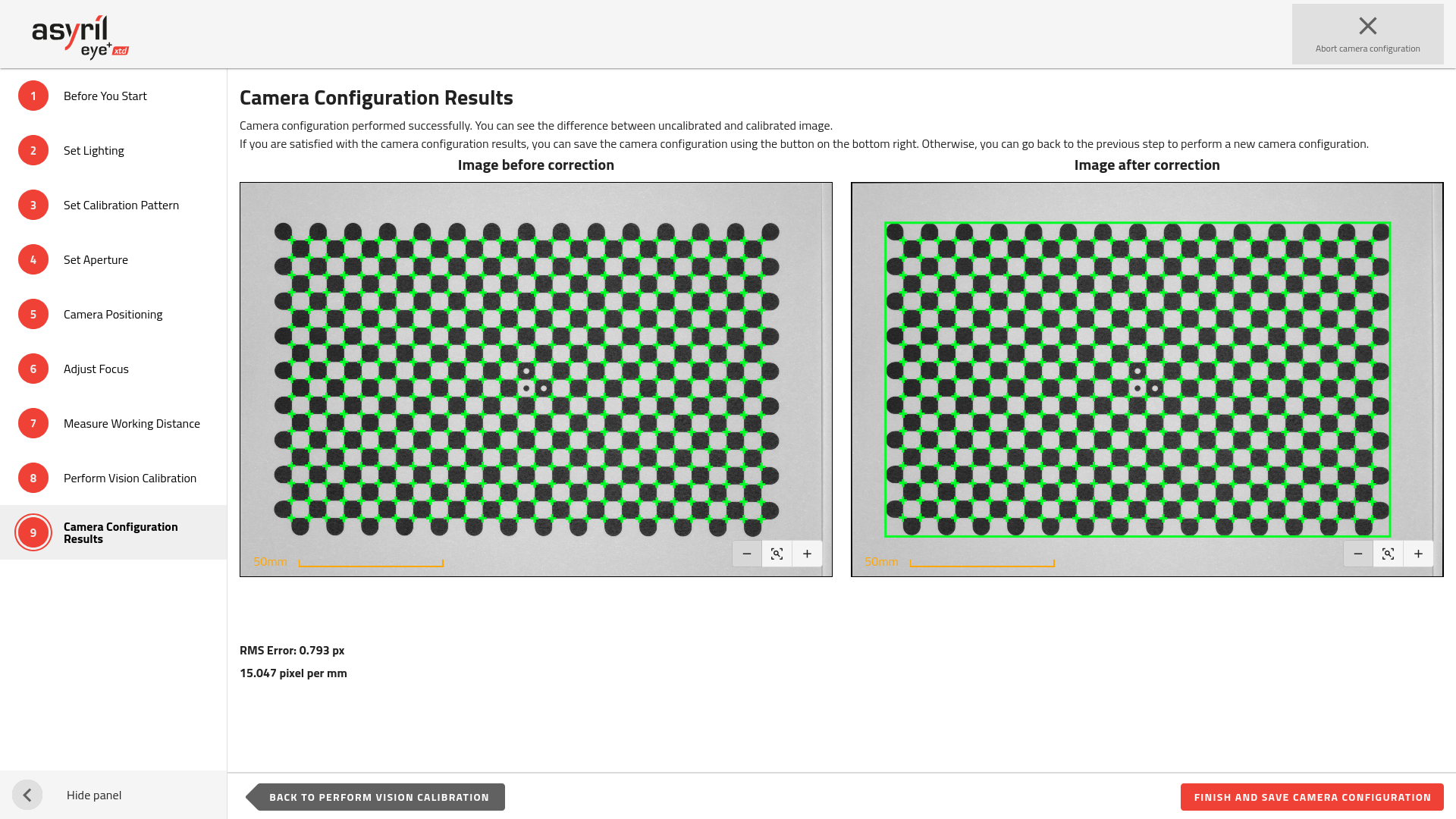Camera configuration
Why do I need to perform the camera configuration?
The camera configuration wizard is used to:
Set up the aperture and the focus of the camera lens.
Make sure that the camera is centered on the picking area where the vision calibration plate is installed.
Inform the system about the relative orientation of the picking area with the camera.
Measure the working distance for optimal parallax correction.
Calibrate the camera using a checkerboard to correct the distortion of the camera lens and work in a more convenient unit (millimeters or inches instead of pixels).
Gather important information about the system configuration to allow recipes to be shared between systems.
Important
The orientation of the camera’s field of view must match the orientation of the picking area. A 90° shift relative to the correct orientation will cause calibration to fail with the error message “wrong orientation detected”. If this occurs, you must remount the camera correctly (see step First startup).
Access camera configuration wizard
Your system is now mounted and connected to EYE+ XTD Studio. You now need to calibrate your camera in order to obtain a good image quality for the next step.
The camera calibration is the first step of the onboarding tool. From the page, simply click on to open the wizard.

Fig. 10 HOME page onboarding - Step 1 - Camera Configuration
You can also access it from the CONFIGURATION page. Click on , then on Vision and finally on .
Perform the camera configuration
Follow the wizard steps to perform the camera configuration.
Once it’s done, you should see a similar window to that in Fig. 11.

Fig. 11 Camera configuration results
This step is critical for defining the system’s Region of Interest (ROI). This definition ensures consistent results when creating a recipe on this system and using it on another. Refer to Can recipes be used on other systems? for more detailed information regarding recipe portability.
Note
If you ever move you picking area relative to the camera (or the other way around), this operation must be performed again to guarantee a similar level of performance.
Now your camera is ready for the next step. You can click on .
Note
Further information on camera configuration can be found in the chapter Camera configuration wizard.
Go back to the page. You will notice that the first step is now completed (Fig. 12).

Fig. 12 HOME page onboarding - Camera configuration is set
You can now continue with the second step: Create your first recipe.